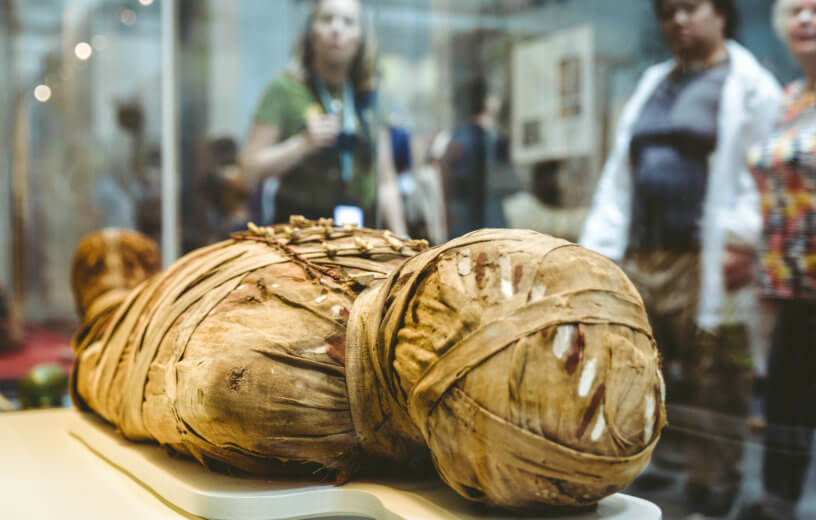Groundbreaking research reveals that heart disease was more prevalent in early humans than first thought.
HOUSTON — Ancient mummies provide valuable insight into the lives of our ancestors, and now new research shows that cholesterol and heart disease may have plagued early societies as much as humans today. An analysis of mummified remains performed at the University of Texas Health Science Center reveals that the arteries of people living during the late Chincorro era were much more clogged than originally thought.
“I wanted to see if heart disease is a modern-day problem. It appears to have been a problem for a very long time,” says lead author and assistant professor of cardiovascular medicine Dr. Mohammad Madjid, in a media release.
Previously, whenever researchers would analyze the hearts or arteries of mummified remains, a CT scan was used. However, these scans are only able to identify accumulated calcium, not cholesterol. That’s what makes this study so groundbreaking; Madjid and his team are the first researchers ever to use an imaging technique (near-infrared spectroscopy) that detects cholesterol on ancient mummies.
“A catheter is placed on the sample and it sends out signals. The signals bounce off the tissue and come back. You can tell the difference between various tissue components because each has a unique molecular signature like a fingerprint,” Madjid says, explaining the imaging process.
Analyzed samples came from the mummified arterial tissue of three men and two women, believed to be between the ages of 18-60 years old when they died. Regarding cause of death, three of the five appear to have died from pneumonia, one of renal failure, and one from an unknown cause. A majority (four of the five) of the mummies were from South America, and one was from the Middle East. All five are believed to have lived between 2000 B.C. and 350-1000 A.D.
The arterial disease detected in the samples is atherosclerosis, a result of cholesterol plaque buildup in arteries. Atherosclerosis impedes the flow of oxygen-rich blood throughout the body, and is known to cause heart attacks.
Atherosclerosis is associated with cholesterol buildup during its early stages, while calcium buildup is a hallmark of the disease during its later stages. With this in mind, Madjd says that previous analysis methods only relying on identifying calcium were only capturing about half the scope of the disease’s likely prevalence among ancient peoples.
As far as what was causing such excessive cholesterol plaque buildup among people living during this time period, researchers listed factors such as smoke from fire pits, viral and bacterial infections left untreated, and bad genes.
It was also noted that plaque buildup was present in samples believed to have been taken from people who died at a young age.
Moving forward, Madjid wants to continue investigating ancient mummies in order to determine just how widespread heart disease was among early humans.
“Noninvasive near-infrared spectroscopy is a promising technique for studying ancient mummies of various cultures to gain insight into the origins of atherosclerosis,” the authors conclude.
The study is published in the American Heart Journal.
